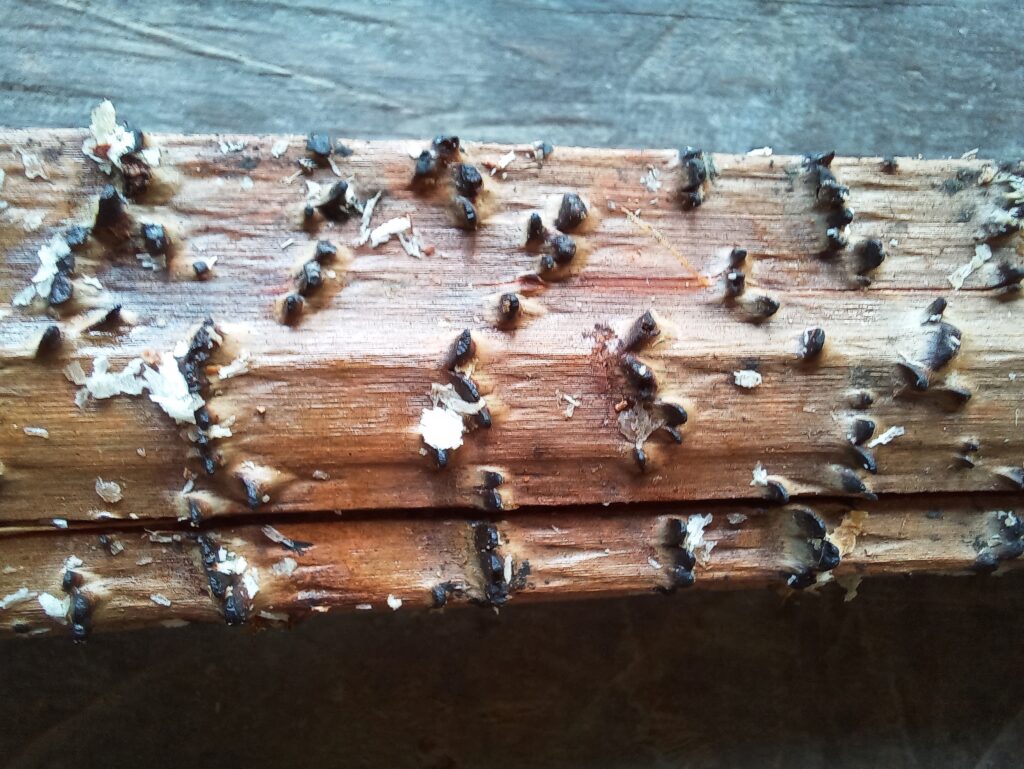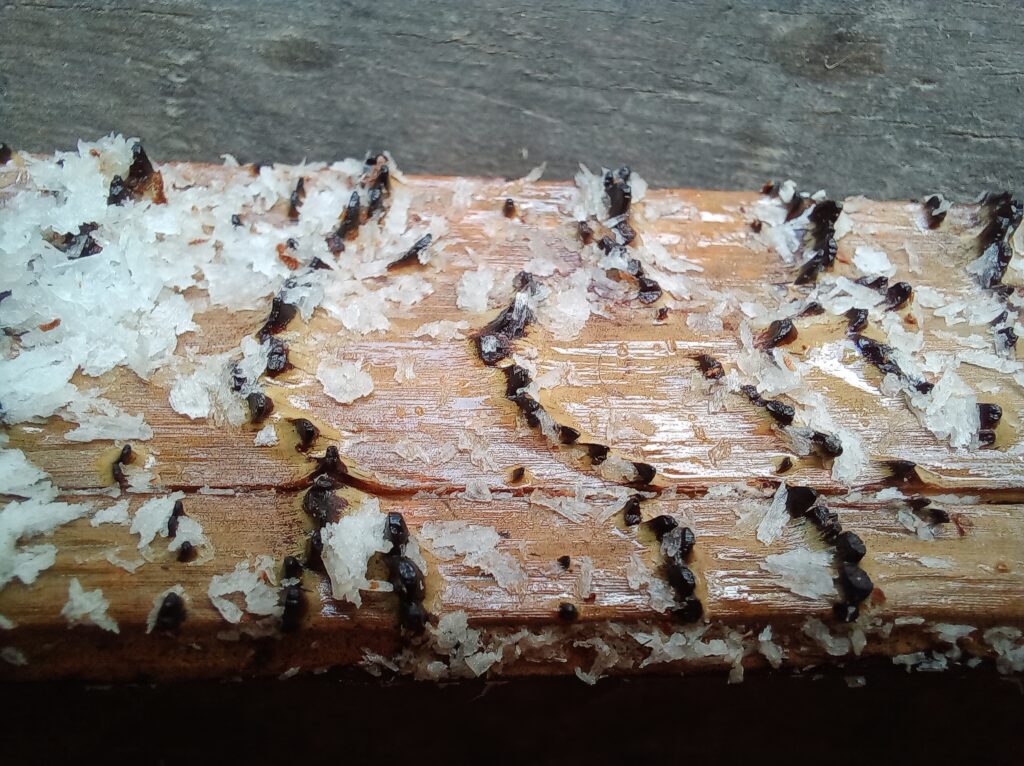Rattan leaf stalks have been, since immortal times, the tools with which Mentawai people have been grating coconuts. These long-lasting tools grate the coconuts into the required size of flakes. When worn out or broken, a new one will be found and cut in the surrounding forest within half an hour. Interestingly, no reference can be found in literature and the internet for using these leaf stalks for grating coconuts, even not here.
Which species of rattan is used for grating stalks?

The following characteristics of the preferred type of rattan were observed:
- Habitat: Solitary habit within lowland rainforest next to brooks and streams
- Stem: One climbing, woody stem
- Leave sheath spines: Very dense covering with long, black-colored spines mostly perpendicular to the sheath.
- Leave sheath knee: distinctly nose-like
- Fruits: axillary fruit clusters
Due to a recognizable nose-shaped leaf sheath knee and fruit clusters around the stem, I’m confident that this is a Calamus species. The denomination ‘Rattan leaf stalks’ simplify the term because botanically, these are the petiole and part of the rachis of rattan leaves.

Collecting and field dressing the Rattan leaf stalks
After finding the right rattan palm, any ripe fruits are harvested, which grow below the leaf stalks to be collected.
Suitable leaves will be cut off the liana.
The half-round backside of the rattan leaf stalk will be cleaned from the spines.
When only the flat upper side of the leaf stalk is left with spines, the future grating tool will be cut to a convenient length.

Preparing the collected leaf stalks for further use
After returning home, the long spines will be burnt off so that only stubbles remain.
Appearance of a worn-out rattan leaf stalk


After using the old rattan grater for more than one year, it can be seen that all teeth are still working very well. They still have the necessary height and cutting edge. The reason for replacing this grater was that the stalk was broken in the middle.
Grating coconuts with a newly harvested leaf stalk
As can be seen from the video, it is easier to grate coconut meat on such a leaf stalk than by many other commercially available mechanical grating devices.
Lessons learned from using rattan leaf stalks for grating
- The Mentawai people live very close to nature. They make the most efficient and best use of available sources in streams and forests.
- Rattan leaf stalks for coconut grating don’t cost anything to the people living in the forests. But they have a high utilization value.
- Surprisingly, this application is not mentioned further in the literature.
.






2 comments
Kurt Hoelzl
Hi Henry,
Appreciate your question. That is a bit of a soar point of mine. Because in 99% of literature about rattan vines, these structures are called ‘spines’. This is debatable, as thorns and spines are modifications of existing organs such as stems, leaves, or stipules. Prickles or emergences on the other hand are outgrowths derived from epidermal and subepidermal layers in locations other than nodes (where stems, leaves or stipules arise).
Therefore in summary:
* Thorn – is a modified stem and can be recognized because a leaf subtends it.
* Spine – a sharp, pointed structure that is a modified leaf or stipule.
* Prickle – a sharp outgrowth from the epidermis or bark. Prickles occur in places other than the stem node like thorns or spines. They can be very numerous and be fearsome structures.
Calamus rattan ‘spines’ are not subtended by a leaf – they are therefore not a thorn. They are also not a modified leaf or stipule – they are therefore not a spine. But they are a sharp outgrowth of the epidermis. Therefore these ‘spines’ should be botanically correctly called ‘prickles’.
At least, that’s my opinion. Kindest, Kurt
Henry C.
Dear author, I found the description of using rattan leaf stalks for coconut grating fascinating. However, I’m curious about the terminology used in the article. Specifically, why are the spines/thorns of the rattan leaf referred to as ‘spines’ instead of ‘thorns’? Is there a biological distinction or another reason for this choice of words? I’d appreciate any clarification you can provide on this matter. Thank you for sharing your knowledge through this insightful article.